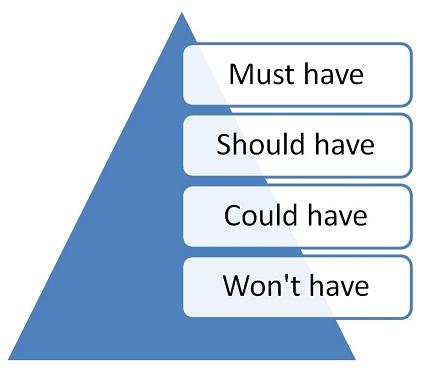Why is an ERP implementation so difficult?
Why is it that a system that is supposed to give you so many benefits is so difficult to implement?
Do the benefits outweigh the costs at all?
These are questions that I see very regularly. Companies are simply hesitant to purchase an ERP system. They postpone it or continue to use partial applications because these separate systems are easier to understand on their own. Integration of all business processes is complex and avoided. They even accept inefficient ones.
I dare say that a good ERP system makes you money. It only requires a lot from the organization to fully utilize an ERP system. I would like to give you my first 5 tips that will certainly contribute to the successful use of your new ERP system.
1. Your objective
Clarify the objective. Why do you invest in an ERP system? Where is the pain in your company, and can an ERP system help to remove this pain? Or are you not in pain yet, but do you expect your company to grow and is your current system not suitable for this? Are you starting with new products or services that require a different system?
Your objective is very important. Determine where you are and where you want to go, and give this goal a challenging and clear name. This main goal is your project name, and everything you do is tested against this goal.
2. Your processes
Mapping out your processes is really essential. Make a clear flowchart of your processes and which steps they go through. You map out how your company actually works, where the pain points are and where the responsibilities lie.
You then determine for each pain point how you are going to measure whether there is progress. Define Critical Success Indicators (KPI) and measure the value each time you start using the ERP system. In this way, you can measure whether the ERP system contributes to the objective.
3. Your requirements and wishes
You have set your goals and know in which areas you want to improve and how much you would like to improve. The processes within the company are clear. This information already provides guidance on what the system should be able to do, without specifically going into the detailed functionalities of an ERP System. But of course, there are also functionalities that you wish to name specifically. Some are very important (Must Haves) and some less important (Nice to Have).

Make a list of all the functionalities you think you need within your company. Do this per process and group it per process. Consulting your employees is very significant in this regard. Make sure that everyone (or key users) can give substance to the creation of this list.
The last step is to prioritize. I recommend the MoSCoW for this (see image). In order for a project to succeed, at least the must-haves and the should-haves must be delivered. The other wishes are of less importance and are often delivered later, or occasionally these needs disappear altogether.
Be strict and focus on your objective. Everything that does not contribute to the objective, everything that does not provide direct value, should be eliminated immediately.
4. Prepare your employees
Implementing an ERP System is a major change in a company. Many employees have been working with the existing system for years and are confronted with new systems, new rules and new work processes. You have to manage this change!
Make sure the goal is clear to everyone. Involve people in the project where possible and where necessary. Provide employees with regular updates on project status. Create support for your vision and objective, and clarify that the ERP System is a means to achieve the goal. But also clarify that the system is completely useless, without the right people at the buttons.
People don't like change, so the trick is to turn the fear of change into enthusiasm for the challenge.
5. Standard or customized
What should I do. Do I have to look for a standard package or do I have to have it custom-made, or is a combination of both possible?
My advice is, don't be afraid of customization. You have a vision, and you have determined a strategy for it with your company. You know that your vision and the good execution of the strategy will bring you great success. Then never let anything hold you back and make sure you have the perfect materials to achieve your goal.
Many of all software packages on the market can easily provide 80% of the functionality. They have all this on board as standard. In my opinion, a package that has a 100% match does not exist. You will see that concessions are always made, which are at the expense of your objective.
Make sure your software package is perfect, doesn't have any frills you don't need, but fully contributes to your goal. It is best to look for a package that has a lot of standard in-house and that can easily be expanded with customization. When it comes to customization, don't think about a missing piece, but about something unique that you have come up with and that (probably) no one else has. Customization can give you an edge over the competition.
These are my first 5 tips to achieve a successful ERP implementation. If you have followed these tips, you have taken really important steps. You have your objective clear. The processes are mapped out and requirements and wishes are on paper. You have thought about standard and custom software and are ready to look for a supplier or implementation partner. In my next blog, I will give you more tips on how best to proceed.
I wrote a sequel! Read part 2 of why is an ERP implementation so difficult.
Why is an ERP implementation so difficult?